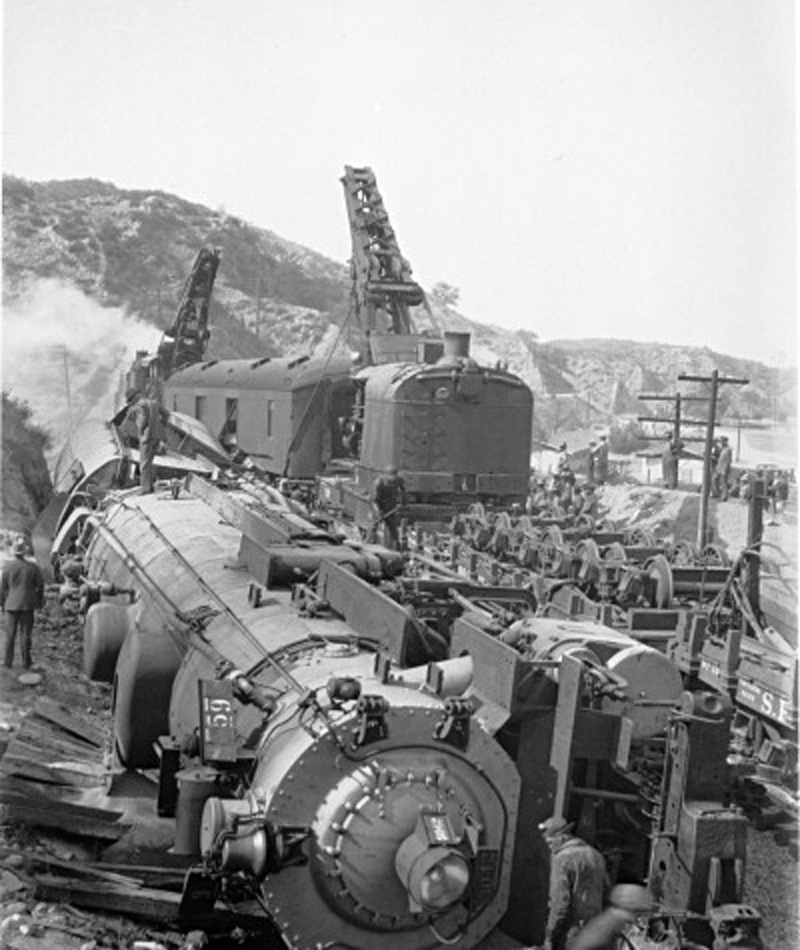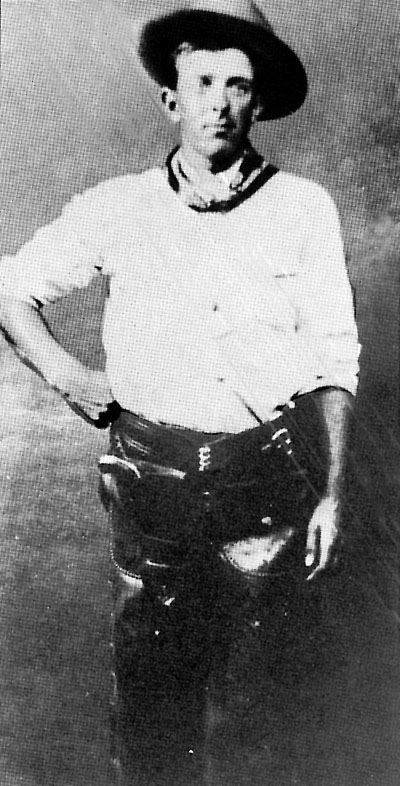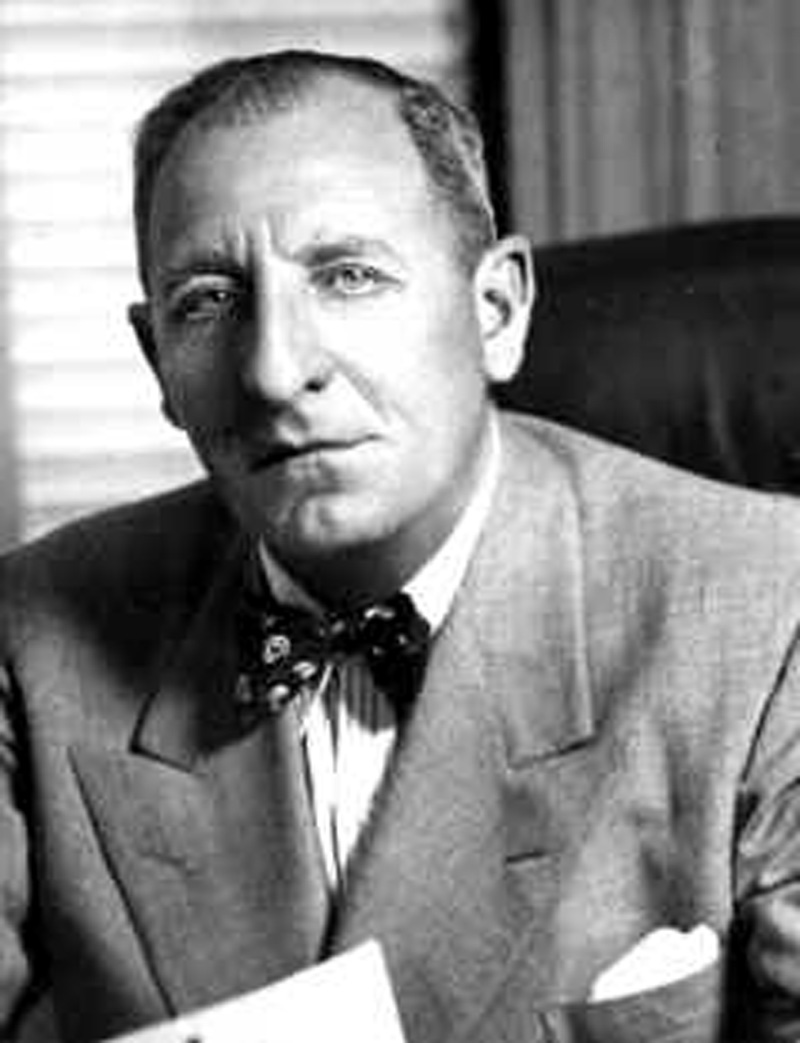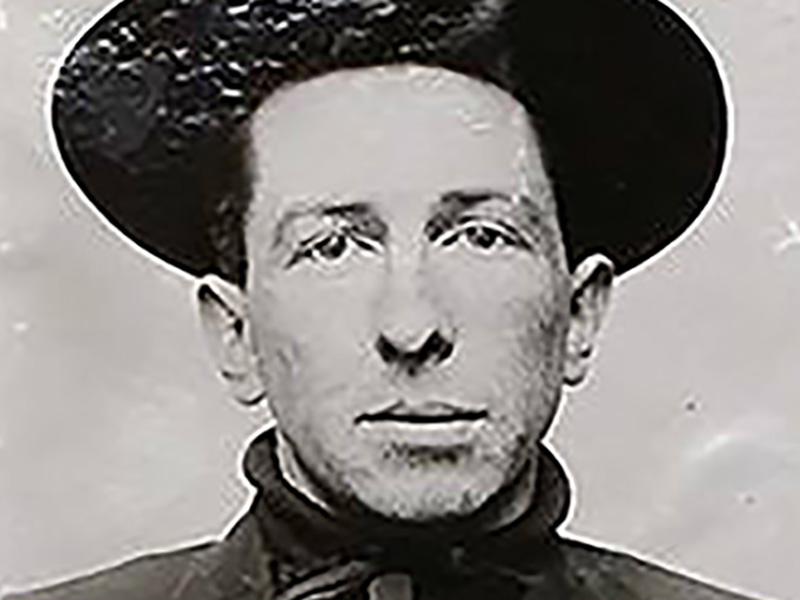This report references one or more of the enduring lies that the inept horse thief and train robber Thomas Vernon told about himself:
that he was "Buffalo" Tom, the rodeo star; and that he was Thomas Averill, the fantasy love child of Jim Averill and Cattle Kate.
He was neither.

Wreck of the West Coast Limited after the robbery, 1929 | Photo by Loren Ayers, contributed by Paul R. Ayers | Click image to enlarge
|
It was one of the last great train robberies in the West.
In the early evening hours of Nov. 10, 1929, Southern Pacific Railroad's Train No. 59, the West Coast Limited, left Central Station in Los Angeles and headed toward the Santa Clarita Valley. On its way to Sacramento and Portland, the ill-fated 12-car passenger train passed through Saugus and rounded the bend near the present-day intersection of Soledad and Bouquet Canyon Roads.
What started as a routine train ride was about to make history.
Buffalo Tom
Lurking in the shadows next to the railroad tracks as the train approached Baker's Rodeo Arena - now the Saugus Speedway - was an ex-rodeo rider who called himself Buffalo Tom Vernon.
Buffalo Tom later claimed to have led a rough life, supposedly starting life as Tom Averill, the son of a Wyoming cattle-rustling couple, James Averill and Ellen Watson, better known as “Cattle Kate.” The parental legacy of James and Cattle Kate is historically suspect, but they are known to have been lynched for cattle rustling in Carbon County, Wyo., in 1889. Tom, then 6 years old, claimed to have been present at the lynching and left for dead.
According to Tom, he was rescued and brought up by a Dakota Indian chief named Iron Tail. He eventually ended up riding in Buffalo Bill's Wild West show, where he picked up the nickname “Buffalo Tom.” He also appeared in the circus of Pawnee Bill, but starting in 1905, Buffalo Tom graduated to criminal activity with crimes such as grand larceny and horse and cattle stealing. He spent time at San Quentin Prison twice, Ohio State Penitentiary, and lastly at Folsom Prison, where he was sent for stealing cattle in 1923.
Shortly after leaving Folsom, Buffalo Tom drifted into the Santa Clarita Valley and sought employment with the Southern Pacific Railroad. He later stated he had been out of work, needing money, and was promised a job by the railroad company but “had been disappointed.”
 Ever resourceful, Tom decided to rob a Southern Pacific train. Railway investigators believed Tom had carefully planned and timed the speed of the train for several days.
Ever resourceful, Tom decided to rob a Southern Pacific train. Railway investigators believed Tom had carefully planned and timed the speed of the train for several days.
Around 6 p.m. on Nov. 10, 1929, from a railroad tool house in Saugus he stole a claw bar and wrench used to remove railway spikes and bolts. He worked his way up to the Southern Pacific tracks just to the west of the Baker Arena.
As Tom stood watch, the Owl passenger train went by without incident. He began to remove the fishplates that connected the rails, and then removed spikes from the rails for about 60 feet.
Tom seemed to know what he was doing. He was careful to leave the signal wires intact, for if broken, they would have warned an engineer of a train ahead.
At 7:30 p.m., the West Coast Limited rounded the bend at Saugus at about 25 miles per hour. The relatively slow speed of the train was credited with saving many lives in the incident that was to follow.
Not more than five minutes after Vernon completed his work on the rails, the Limited reached the weakened tracks and derailed while Buffalo Tom stood by watching. Locomotive 5042, the baggage car, and a smoker overturned and hurtled into a ditch next to the tracks.
Engineer R.C. Ball was pinned beneath the engine and was badly scalded from escaping steam. He was taken to White Memorial Hospital. Miraculously, Ball was the only person injured on the train.
Fifteen minutes later, the surviving passengers in the rear of the train were confronted by Buffalo Tom and his pistol. Five persons were herded into one car and held at gunpoint but were not robbed.
Southern Pacific employee W.S. Higgins was credited with saving another car from the robbery when he noticed Buffalo Tom running alongside the train. He screamed out, “Hide your money and valuables. This is a train robbery.” The porter in the car locked the doors at both ends and prevented Tom from entering.
Tom was reported by the passengers to appear nervous and ill at ease. At first he acted like a railroad employee, instructing passengers to go to the last two coaches, reassuring them that a relief train was on the way from Saugus. After a number of people complied, Tom went into bandit mode, pulled a bandana over his face, and in a mild, soft voice blurted out, “Folks, get your money quick. No time! No time! You folks all stay where you are.My mate is up at the other end and I left my horse up on the road. I am a rancher here; never mind the jewelry, I want currency.”
The Los Angeles Times the next day thought at least two bandits were involved but later concluded in a Nov. 12 headline: “Wreck Now Believed to Have Been Plotted and Executed by One Demented Man for ‘Thrill.'”
Only twelve passengers reported loss of money that night. Tom walked away with about $300.
One passenger was actually somewhat amused by the whole incident. Irwin Bennett of Manchester, England, told a reporter: “It was really quite an experience. I had begun to think all these tales of your ‘Wild West' were fiction, but now I can see they are based on fact.”
Manhunt Made Easy
Buffalo Tom was not a particularly smart criminal.
Passengers described the bandit as wearing a grey coat. The coat, with Tom's name marked on it, was found in the hills behind the train wreck by a deputy sheriff, along with other items tying him to the scene of the crime. Near the coat were found the business card and purse of two of the robbery victims.
Tom apparently headed into Saugus where he hitched a ride into Hollywood, telling the driver and Burbank carpenter Tom Firth that he was going to visit a woman friend having surgery at the Hollywood Hospital.
Tom also left a paper trail of letters written to various women friends while he was on the run. Investigators used the letters to trace his movements and eventually capture him.
Late that same month, Tom showed up near Cheyenne, Wyo., where a Union Pacific train was derailed and robbed. He would later deny involvement in the Wyoming robbery, but police strongly believed it to be his work, as well.
As noted, investigators used letters written by Vernon to trace his movements. They found he had visited the woman friend at Hollywood Hospital on the night of the Saugus train wreck. He reached Cheyenne on Nov. 14 but left Nov. 25, one day after the train robbery there.
He next went to Denver, where he stayed until Nov. 29. He headed for Pawnee, Okla., but before leaving Denver, he foolishly left his Pawnee address with a chambermaid in the Manx Hotel. This last letter led to his capture and arrest in Pawnee on Dec. 1.
The next night, Sheriff Jones of Pawnee County announced Buffalo Tom's confession to the train wreck and robbery in Saugus, but not to the Cheyenne robbery. Jones said he would allow extradition to California but not to Wyoming.
It is thought Vernon felt he would be treated more leniently in California. He knew that in Wyoming, his crime would be punishable by death as the sole legal option, and he also knew no train robber in Wyoming had ever escaped punishment.

Los Angeles County District Attorney Buron Fitts
|
Both Wyoming and California wanted to bring Vernon to justice, so Los Angeles County District Attorney Buron Fitts (1895-1973) raced to Oklahoma preparing for a struggle with Wyoming officials. Vernon's confession allowed Fitts to win the legal battle and transport the bandit back to Los Angeles.
Off to Prison
On Dec. 11, Buffalo Tom first appeared before a judge in Los Angeles, where he was charged with one count of train wrecking and three counts of robbery. Fitts announced his intention to seek the death penalty.
One week later, despite Fitts' best efforts to send him to the gallows, 45-year-old Buffalo Tom Vernon was sentenced to life in prison without the possibility of parole by Superior Court Judge William Tell Aggeler (1866-1937). He was sent back to Folsom Prison to serve out his sentence.
Despite the life sentence, Buffalo Tom did eventually leave prison. But the ultimate ending to the saga of the Great Saugus Train Robbery remains steeped in controversy.
Local historian Jerry Reynolds reported Vernon released from prison in 1964 and dying shortly thereafter of a “social disease.” However, Carolena Rezendes of Sacramento wrote a letter to the SCV Historical Society in 2004 disputing Reynolds story. She stated: “I know for a fact that he was not in prison in 1957-1958 because he was living with my family in Sacramento, California, in 1957 and 1958. As to how he died, it was TB (tuberculosis). Our family buried him.”
Postscript: Buron Fitts served as deputy district attorney from 1920 to 1926, when he was elected California lieutenant governor, serving under Gov. C.C. Young. In November 1928 he resigned his state post so he could prosecute his former boss, L.A. County District Attorney Asa Keyes, who was indicted for bribery. Fitts was elected district attorney that same year and served in that position until 1940. He joined the Army Air Corps in 1942 as a major in intelligence and retired to Tulare County where he committed suicide by a gunshot to the head in 1973.

 Ever resourceful, Tom decided to rob a Southern Pacific train. Railway investigators believed Tom had carefully planned and timed the speed of the train for several days.
Ever resourceful, Tom decided to rob a Southern Pacific train. Railway investigators believed Tom had carefully planned and timed the speed of the train for several days.

























